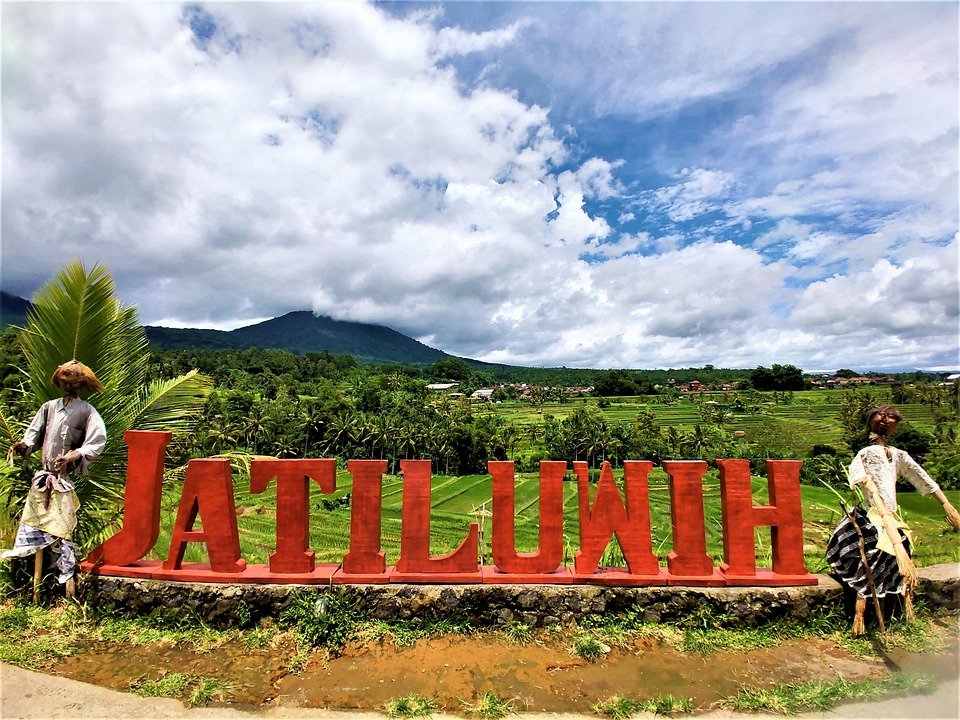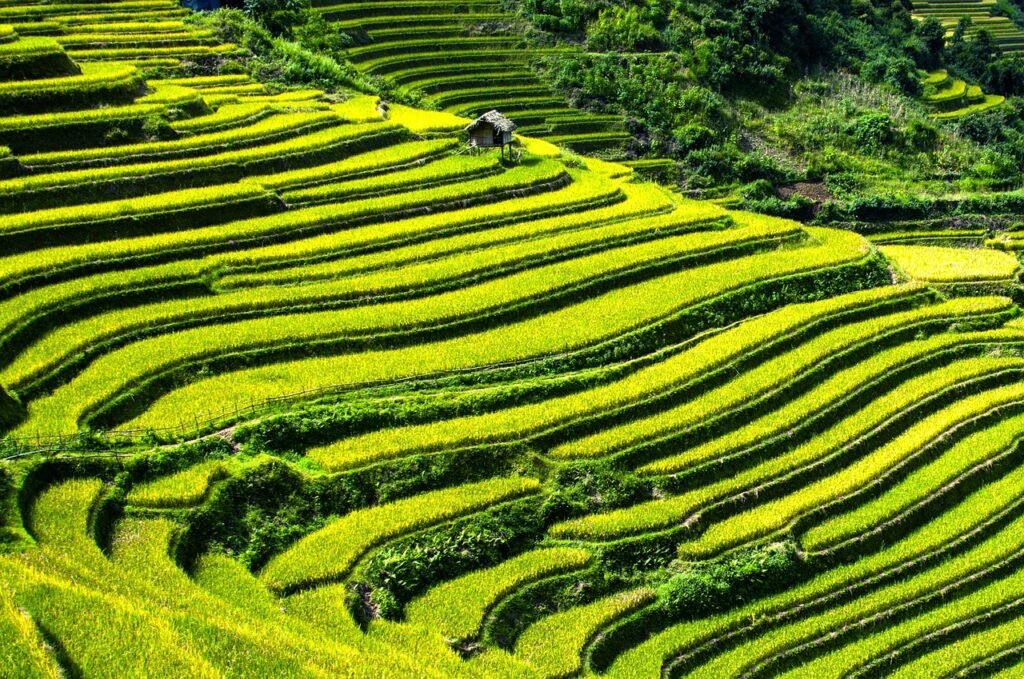Nestled in the heart of Bali’s Tabanan region, the Jatiluwih Rice Terraces are more than just a breathtaking landscape—they are a living testament to the island’s rich agricultural heritage and deep cultural roots. Recognized as a UNESCO World Heritage site, these terraces showcase the ancient Balinese irrigation system known as “subak,” which has been used for centuries to harmonize farming with the island’s spiritual traditions and natural environment.

For visitors seeking tranquility, natural beauty, and a connection to Bali’s heritage, the Jatiluwih Rice Terraces offer an unforgettable experience.
The Significance of the Jatiluwih Rice Terraces
The Jatiluwih Rice Terraces are celebrated for their stunning beauty, but they are also a vital part of Bali’s cultural identity. The terraces are a remarkable example of the subak system, a cooperative irrigation method developed in the 9th century. This system is not just about water distribution—it reflects Bali’s Hindu philosophy of Tri Hita Karana, which emphasizes harmony between humans, nature, and the divine.
The subak system ensures that water is shared equitably among farmers, fostering a sense of community and sustainability. As you walk through the terraces, you’ll see not just a working agricultural landscape but also a living embodiment of Balinese culture and spirituality.
Getting to Jatiluwih
The Jatiluwih Rice Terraces are located about 50 kilometers (31 miles) northwest of Denpasar, Bali’s capital. The journey to Jatiluwih takes approximately 1.5 to 2 hours by car, winding through lush forests, quaint villages, and rolling hills. Many visitors choose to hire a private driver or join guided tours that often include stops at nearby attractions like the Ulun Danu Beratan Temple or the Bali Botanic Garden.
Exploring the Terraces

Once you arrive at Jatiluwih, the sheer scale and beauty of the rice terraces will take your breath away. The emerald-green fields stretch as far as the eye can see, cascading down the hillsides in a harmonious pattern that seems almost otherworldly.
Walking Trails
The best way to explore the terraces is on foot. Several well-marked trails meander through the fields, ranging from short, easy walks to longer hikes that take you deep into the heart of the landscape. Walking among the rice paddies allows you to fully appreciate the craftsmanship that went into creating this intricate agricultural masterpiece.
Cycling Routes
For those who prefer a faster pace, cycling is another popular way to experience the terraces. Bikes can be rented locally, and several trails are suitable for cyclists of all skill levels. Riding through the terraces offers a different perspective, with sweeping views of the surrounding mountains and valleys.
Photography Opportunities
Jatiluwih is a paradise for photographers. The vibrant green hues of the rice fields, the interplay of light and shadow as the sun moves across the sky, and the backdrop of Mount Batukaru create countless opportunities for stunning shots. Sunrise and sunset are particularly magical times to visit, with soft, golden light enhancing the beauty of the terraces.
Cultural Experiences
The Jatiluwih Rice Terraces are not just a visual spectacle—they also offer a chance to immerse yourself in Balinese culture.
Meet the Farmers
As you explore, you may encounter local farmers tending to the fields. Many are happy to share stories about their work and the traditions that have been passed down through generations. Observing their daily routines provides a deeper appreciation for the effort and dedication that goes into maintaining the terraces.
Traditional Farming Practices
Some tours include demonstrations of traditional farming techniques, such as planting or harvesting rice by hand. These activities give visitors a hands-on understanding of the agricultural processes that sustain this beautiful landscape.
Local Cuisine
No visit to Jatiluwih is complete without sampling Balinese cuisine made with locally grown rice. Nearby restaurants and warungs (small eateries) serve dishes like nasi campur (mixed rice) and bebek betutu (slow-cooked duck), offering a taste of the island’s rich culinary heritage.
The Surrounding Area
Jatiluwih’s beauty doesn’t end with the rice terraces. The surrounding region is home to lush forests, pristine rivers, and sacred sites that add to the area’s charm.
Mount Batukaru
The terraces are located at the foot of Mount Batukaru, Bali’s second-highest volcano. The mountain provides a dramatic backdrop to the fields and is also a popular destination for hiking and spiritual retreats.
Batukaru Temple
Located nearby, Batukaru Temple is one of Bali’s most important spiritual sites. This peaceful temple, nestled in the forest, is dedicated to the guardian spirits of the mountain. A visit here adds a spiritual dimension to your journey.
Hot Springs
After a day of exploring, you can unwind at one of the nearby hot springs. These natural pools, set amidst serene surroundings, offer a relaxing way to end your adventure.
Sustainability and Conservation
The Jatiluwih Rice Terraces are more than just a tourist attraction—they are a living example of sustainable agriculture. Efforts are underway to preserve the terraces and the subak system in the face of modernization and changing economic conditions. By visiting Jatiluwih, you support the local community and contribute to the preservation of this UNESCO World Heritage site.
Practical Tips for Your Visit
- Wear Comfortable Shoes: The trails can be uneven, so sturdy footwear is essential.
- Bring Sun Protection: The sun can be strong, especially during the midday hours. Hats, sunglasses, and sunscreen are recommended.
- Carry Water: Stay hydrated, especially if you plan to hike or cycle.
- Respect Local Customs: The terraces are a working agricultural area and hold cultural significance. Be mindful of where you walk and avoid disturbing the fields.
- Visit During Harvest Season: If possible, plan your visit to coincide with the harvest season, when the fields are at their most vibrant.
Why Jatiluwih Should Be on Your Bali Itinerary
A visit to the Jatiluwih Rice Terraces is not just about admiring beautiful scenery—it’s about connecting with Bali’s cultural roots and understanding the delicate balance between humans and nature. The terraces offer a peaceful retreat from the hustle and bustle of Bali’s more crowded destinations, providing an opportunity to slow down and appreciate the island’s timeless beauty.
Discover the magic of the Jatiluwih Rice Terraces with LocalHi. Walk through lush fields, learn about Bali’s ancient traditions, and create memories that will last a lifetime.





